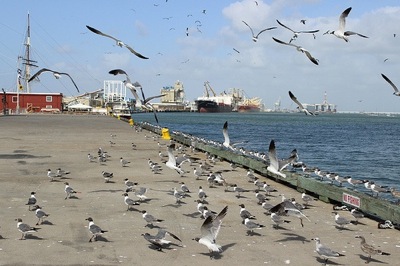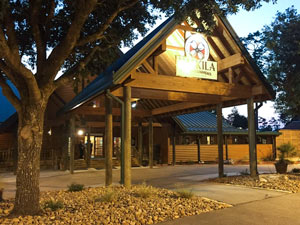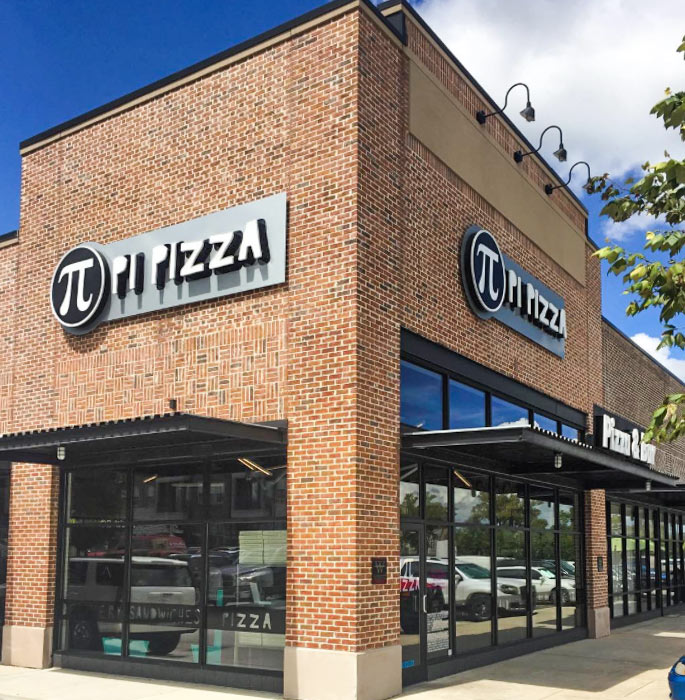
 The map above (a snap from Luke Whyte’s click-and-zoom-able original version, published this week by the Texas Tribune) shows the abandoned oil and gas wells scattered in and around the Houston area, per the official accounting of the Texas Railroad Commission. The state agency (which has had nothing to do with railroads since 2005) regulates pipelines, oil, and gas, and keeps tabs on so-called “orphaned wells” whose original owners have stopped keeping tabs on them for one reason or another, writes Jim Malewitz this week — the ones that were reported in the first place, that is. Kerry Knorpp, formerly on a defunct state committee overseeing oilfield cleanup efforts, also tells Malewitz that “there is about to be a tsunami of [newly] abandoned wells — wells were drilled at $110 oil that you would have never completed otherwise.â€
The map above (a snap from Luke Whyte’s click-and-zoom-able original version, published this week by the Texas Tribune) shows the abandoned oil and gas wells scattered in and around the Houston area, per the official accounting of the Texas Railroad Commission. The state agency (which has had nothing to do with railroads since 2005) regulates pipelines, oil, and gas, and keeps tabs on so-called “orphaned wells” whose original owners have stopped keeping tabs on them for one reason or another, writes Jim Malewitz this week — the ones that were reported in the first place, that is. Kerry Knorpp, formerly on a defunct state committee overseeing oilfield cleanup efforts, also tells Malewitz that “there is about to be a tsunami of [newly] abandoned wells — wells were drilled at $110 oil that you would have never completed otherwise.â€
The shaded hexagons above are meant to help show the density of those holes, not the degree to which they might pose a pollution hazard (though the agency ranks each well by its hazard potential, too, to help it decide which ones to plug up first, of the more than 10,000 currently on the docket).
Just what kind of hazards can a bunch of abandoned holes pose, anyway?



 Adam Doster pens an update on the fate of the Alabama-Coushatta Tribe of Texas’s 24-hour Naskila Gaming gambling center a few miles east of Livingston: The tribe, which reopened the rebranded gambling space in June after its 2002 closure by the state, is currently awaiting a trial date related to its array of
Adam Doster pens an update on the fate of the Alabama-Coushatta Tribe of Texas’s 24-hour Naskila Gaming gambling center a few miles east of Livingston: The tribe, which reopened the rebranded gambling space in June after its 2002 closure by the state, is currently awaiting a trial date related to its array of  “Ironically, the stricter the rules are for evicting people (to ‘protect’ tenants), the stricter we have to be on rent qualification and deposit size, which makes it harder for many tenants to rent. It would be easier to take a risk on a marginal tenant (low credit score, less than a full month deposit), if the property code didn’t allow them to bunker down in the apartment for 2 months if they don’t pay rent. A good example of a well-meaning law backfiring.” [
“Ironically, the stricter the rules are for evicting people (to ‘protect’ tenants), the stricter we have to be on rent qualification and deposit size, which makes it harder for many tenants to rent. It would be easier to take a risk on a marginal tenant (low credit score, less than a full month deposit), if the property code didn’t allow them to bunker down in the apartment for 2 months if they don’t pay rent. A good example of a well-meaning law backfiring.” [